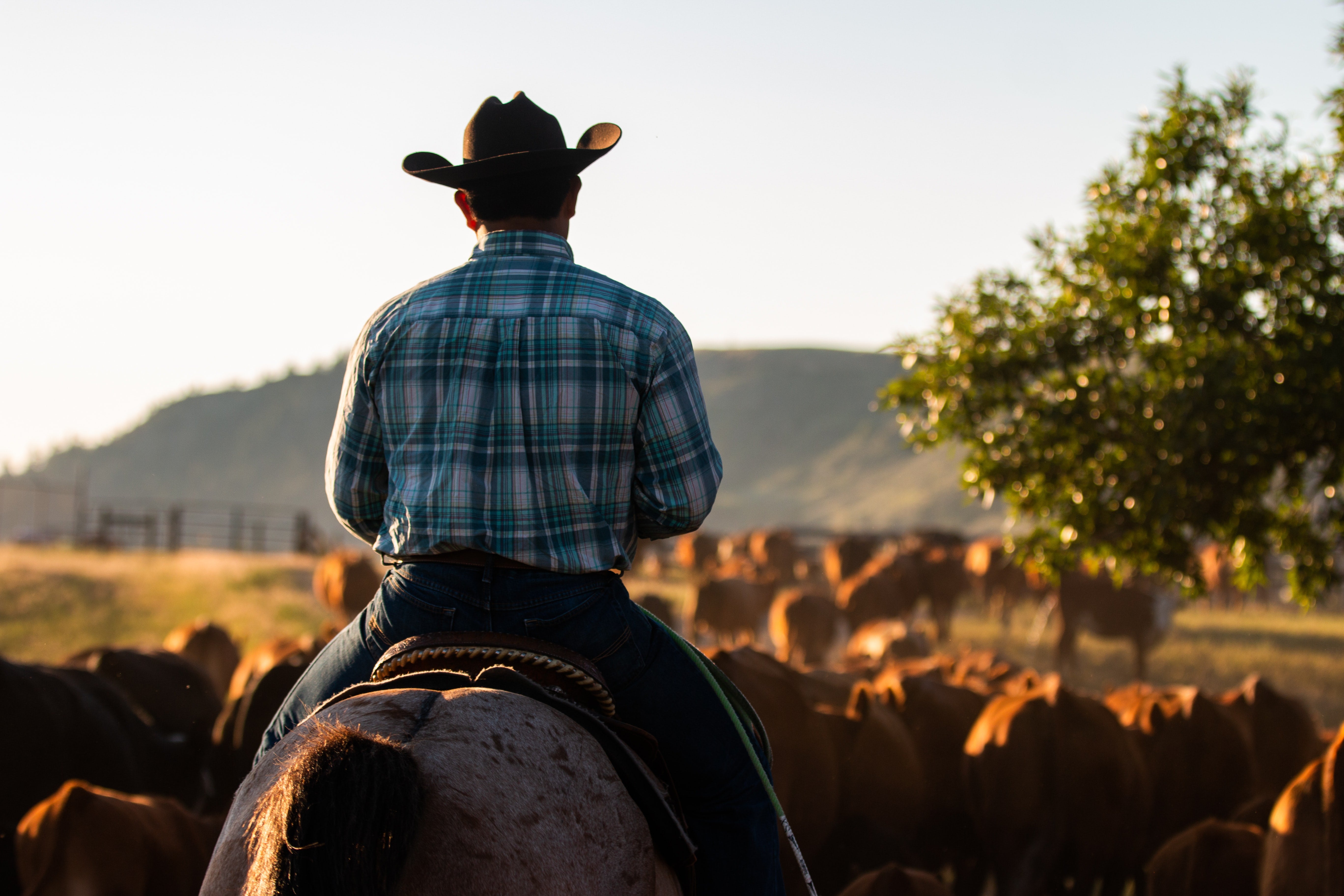I’m sure you have heard the term “cowboy” many times. Likely in association with Hollywood films featuring John Wayne or with rodeos like Cheyenne Frontier Days. However, do you know much about the origin of the cowboy?
There is much more to their history than a life of fame and winning buckles. The cowboy is an integral part of American history, especially regarding westward expansion in the U.S. Read on to learn about their beginnings and how they evolved. Additionally, we’ll take a realistic look at what a cowboy’s life might have looked like back in the day, contrary to the glamorized version portrayed by the film industry.
Their Origin
The origin of the cowboy takes us out of the U.S., and into Mexico. Here is where the true history of the cowboy began. The native cowboys in Mexico were called vaqueros, originating from the Spanish word for “cow.”
Originally, vaqueros worked on ranches in Mexico, known for their skills in herding, riding, and roping. Eventually, their practices entered into western America in the 1700s. Then as settlers later began moving west they also adopted many aspects of the cowboy culture, including their attire and cattle drive techniques, from the vaqueros. There were no prerequisites for determining who became a cowboy, as the range of diversities and ethnicities that made up this group was vast.
Their Evolution & Industry
So, the origin of the cowboy began in Mexico. But what was it that brought this industry to the U.S., appealing to such a wide range of people? A large factor in the adoption of the vaqueros’ practices was the amount of money that could be made through the cattle industry. A cow could be purchased for five bucks out West with the potential of being sold back East for twelve times that amount!

This sounds like an easy way to make money, right? Well, the problem was transportation, as this was long before the days of semi-trucks and paved highways. Cowboys had to drive the cattle on horseback many hundreds of miles to bring them to market. Then, after the cattle were sold, they would make the long trip back West.
However, this method of transportation didn’t last very long as it wasn’t long before the railroad made its way West in the mid-1800s. This new method of travel drastically changed the way cattle were transported. All the cowboys needed to do now was bring the cattle to the train and the railway would do the long trip for them.
But how could they determine which cattle were theirs after they all got loaded onto the train? Cattle branding is the practice of using a hot iron to sear a brand into the hide of the cow. This allowed ranchers to keep track of which cows belonged to them, as each ranch would have its own unique brand. This is a practice still used by ranches to this day.
The era of the cowboy largely subsided after the privatization of land and the invention and widespread use of barbed wire. One specific event that greatly contributed to the demise of the historic cowboy was the winter of 1886. Unfortunately, this particular winter saw extreme temperatures that resulted in large numbers of cattle dying out West.
Their Reality
Okay, so we’ve traced the history of the cowboy, beginning with their roots back in Mexico and eventually making their way out west. But what did the average day look like for the historic cowboy? Was it purely a life of adventure and lawlessness, as portrayed by Hollywood?
Most cowboys began their career choices out of necessity, as a way to pay the bills, just like people do today. However, the amount they made was a little different, ranging from $25-$40 a month. Additionally, due to the difficult nature of the work, the career span of a cowboy typically was no longer than seven years.

Their days were long, consisting predominantly of manual labor. They often would work 15 hour days. General duties for a cowboy would include taking care of the cattle and horses, including cattle drives and roundups. During a drive, a cowboy wouldn’t get much sleep as they had to keep watch over the cattle at all times to prevent a stampede or wandering cows. They also had to help with repairs to fences and buildings.
Some did develop poor reputations, as they were known for spending their money on gambling, drinking, and prostitution when they weren’t working. However, cowboys were not allowed to gamble, drink, or fight while on the job. It was by no means a typical 8-5 job either, rather a lifestyle. Cowboys often lived where they worked, and it wasn’t uncommon for them to share lodging on a ranch. In the few moments of downtime cowboys did have, they might be found playing the harmonica, singing a few tunes, or writing a little poetry. The diet of a cowboy was by no means glamorous, as they typically ate basic staple items such as beans, bacon, potatoes, bread, dried fruit and coffee. It’s safe to say that contrary to Hollywood, much of a cowboy’s career was less than glamorous.
As mentioned previously, the majority of cowboys did hang up their hats with the loss of open ranges. However, there are still some cowboys that continue to carry on the profession today. Although there are similarities, they definitely don’t have the same job descriptions or lifestyles as the cowboys of old. Knowing the history of the cowboy helps bring a new appreciation to how and where it all began, the vital role they played in history, along with a more realistic idea of what their lives may have looked like.
